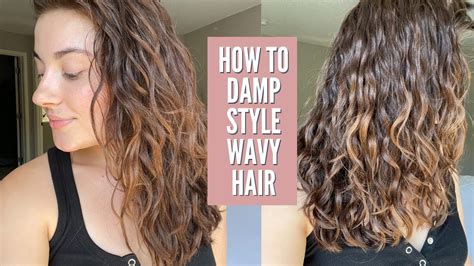Introduction
Wild, uncontrollable hair can leave you feeling frustrated and self-conscious. But don’t despair! Embracing the beauty of wet and wavy hair can be a game-changer in your hair care routine. Here are 40 fascinating facts, figures, and practical tips to help you achieve luscious, tangle-free locks.

Section 1: The Science of Wet and Wavy Hair
1. Hair Anatomy: The Key to Understanding Wet and Wavy Hair
- Hair consists of three layers: the cuticle, cortex, and medulla.
- The cortex determines the hair’s texture, including waviness.
2. The Moisture Factor: Unlocking the Secrets of Wet and Wavy Hair
- Wet hair is more malleable and elastic than dry hair.
- The water molecules in wet hair help to loosen the hair’s bonds, creating a more pliable texture.
3. The Role of Protein: Building Blocks for Stronger, Wavier Hair
- Proteins, such as keratin, provide strength and structure to the hair.
- Adequate protein levels can help reduce breakage and enhance the definition of waves.
Section 2: Embracing Wet and Wavy Hair: A Guide to Taming Your Mane
1. The Right Wash Day Routine: A Clean Slate for Gorgeous Waves
- Wash your hair 2-3 times per week with a sulfate-free shampoo.
- Apply conditioner to the lengths and ends of your hair, avoiding the roots.
- Rinse thoroughly with lukewarm water to prevent dryness.
2. Detangling: The Art of Gentle Combing
- Use a wide-toothed comb or a detangling brush to gently remove knots.
- Start from the ends of your hair and work your way upwards.
3. Styling Techniques: Enhancing the Beauty of Your Wet and Wavy Hair
- Use a leave-in conditioner to hydrate and define your waves.
- Apply mousse or gel to create hold and volume.
- Diffuse your hair on a low, cool setting to enhance the waves and reduce frizz.
Section 3: Tips for Enhancing Your Wet and Wavy Hair Texture
1. The Importance of Trims: Keeping Away Split Ends
- Get regular trims to remove split ends, which can weigh down your hair and make it more prone to tangles.
2. The Benefits of Deep Conditioning: A Nourishing Treat for Your Hair
- Deep condition your hair weekly with a moisture-rich mask to replenish lost moisture and improve elasticity.
3. The Power of Boar Bristle Brushes: A Natural Detangler
- Use a boar bristle brush to distribute natural oils throughout your hair, reducing frizz and enhancing shine.
Section 4: Unveiling the Secrets of Wet and Wavy Hair Care
1. The Role of Hydration: The Elixir for Healthy Waves
- Drink plenty of water to maintain hydration, which is essential for healthy hair.
- Avoid excessive use of heat styling tools, as they can dehydrate your hair.
2. The Importance of a Balanced Diet: Nourishment for Your Hair from Within
- Consume a balanced diet rich in protein, vitamins, and minerals to support healthy hair growth and reduce breakage.
3. Avoiding Over-Shampooing: The Path to Less Breakage
- Over-shampooing can strip your hair of natural oils, leading to dryness and breakage.
Section 5: Troubleshooting Common Wet and Wavy Hair Challenges
1. Tackling Frizz: Taming the Unruliness
- Use an anti-frizz serum or spray to smooth down flyaways.
- Avoid brushing your hair too much, as it can create static and increase frizz.
2. Addressing Dryness: Restoring Moisture to Your Waves
- Apply a moisturizing leave-in conditioner or hair oil to hydrate and detangle your hair.
- Use a humidifier in your home to increase the air’s moisture content.
3. Reducing Breakage: Protecting Your Precious Strands
- Avoid using tight hairstyles that can put stress on your hair.
- Get regular trims to remove weak and damaged ends.
Section 6: Frequently Asked Questions (FAQs) About Wet and Wavy Hair
-
Q: What is the best way to dry wet and wavy hair?
– A: Diffuse your hair on a low, cool setting to enhance the waves and reduce frizz. -
Q: How often should I wash my wet and wavy hair?
– A: Wash your hair 2-3 times per week with a sulfate-free shampoo. -
Q: What are the benefits of using a leave-in conditioner?
– A: Leave-in conditioners hydrate and define your waves, reducing frizz and tangles. -
Q: How can I enhance the definition of my waves?
– A: Apply a mousse or gel to create hold and volume, and use a comb or brush to distribute it evenly. -
Q: What is the best way to style wet and wavy hair?
– A: Use a combination of styling products, such as leave-in conditioner, mousse, and gel, and diffuse your hair on a low, cool setting. -
Q: How can I prevent breakage in wet and wavy hair?
– A: Avoid using tight hairstyles, get regular trims, and use a detangling brush or comb to gently remove knots. -
Q: What is the best way to deep condition wet and wavy hair?
– A: Apply a moisture-rich hair mask to your hair, cover it with a shower cap, and leave it on for 30 minutes or more. -
Q: What foods are good for wet and wavy hair?
– A: Consume foods rich in protein, vitamins, and minerals, such as fruits, vegetables, whole grains, and lean protein.
Conclusion
Embracing the beauty of wet and wavy hair is a liberating experience. By understanding the science behind it, adopting effective care routines, and troubleshooting common challenges, you can unlock the full potential of your gorgeous waves. Remember, healthy hair is happy hair, so treat your locks with love and enjoy the vibrant, voluminous hair you deserve.
